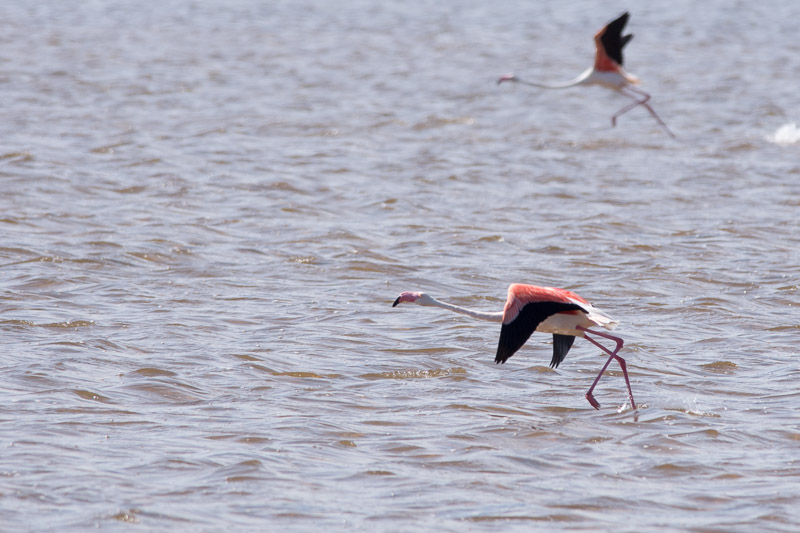
Entrance to one of the very few European breeding colonies of the Greater Flamingo.
Located on a dis-used salt pan close to the Anastasio Senra visitor centre access is restricted to avoid disturbance. Fortunately in late June the breeding season is over and pedestrian access is available. In addition to Greater Flamingo’s plenty of European Spoonbill’s to be found.

View across the dis-used salt pans.
Fortunately the perimeter path is in a far better condition than the network of tracks and rusting bridges that the workers previously used.

Greater Flamingo’s feeding on the salt-pans.

Interesting to see the pinkish hue to the slowly evaporating salt water. Apparently this is due to iron oxides and other mineral deposits.
The pink in the Flamingo’s feather is largely derived from the beta carotene that naturally occurs in brine shrimp. The lurid pink often seen in captive Flamingo’s is from another chemical called canthaxanthin that is mixed into their food. This is the same chemical that fish farmers feed to farmed salmon in order to make them look more appetizing.

Easily spooked attempting to sneak up on the Flamingo’s proved impossible. Fortunately there are a few strategically placed viewing screens that with patience the birds will approach.

Although elegant in flight sadly the same can’t be said for arrival and departure.
